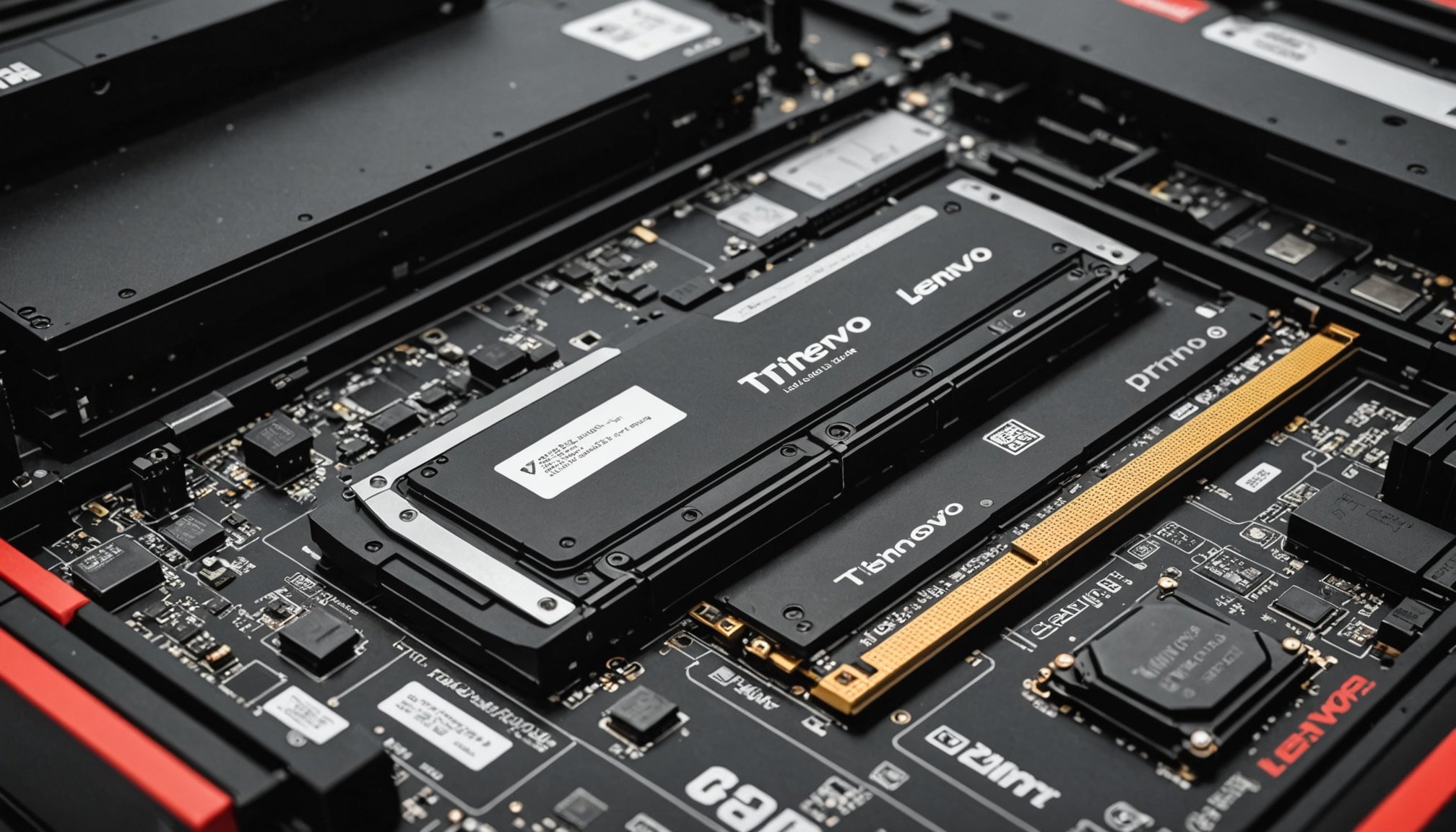Understanding RAM Compatibility with the Lenovo ThinkStation P620
When upgrading the RAM compatibility of your Lenovo ThinkStation P620, understanding the importance of matching RAM specifications is crucial. The speed, type, and size of RAM need to align seamlessly with the system’s requirements. This ensures that the computer runs smoothly, avoiding potential bottlenecks or performance issues.
The ThinkStation P620 supports a range of RAM specifications, but ideally, users should opt for RAM modules that match the DDR4 ECC RDIMM standard recommended for optimal performance. Brands known for their reliability with the P620 include Crucial, Kingston, and Corsair, offering configurations that are tested for this workstation.
Also to see : Step-by-Step Guide to Setting Up and Optimizing a RAID 5 Array on Your Synology DS920+ for Superior Performance
Before purchasing additional RAM, it’s essential to check the current RAM specifications in your P620. The system’s technical manual can be beneficial in guiding you through this. Note that the P620 supports up to 1TB of RAM, but this also depends on the processor and motherboard being used.
Key considerations include the maximum speed your setup supports, typically up to 3200MHz, and whether the installed RAM is error-correcting, which is vital for data integrity in professional environments. Ensuring compatibility with these specifications will help in maximizing the workstation’s performance and longevity.
In the same genre : How to Install and Set Up an External GPU on Your Dell XPS 13 for Enhanced Graphics Power
Step-by-Step Installation Guide
Embarking on enhancing your Lenovo ThinkStation P620? Begin with understanding the RAM installation steps. With attention to detail, the process can be seamless.
Preparing the Workstation for RAM Installation
Before you start, ensure you have the right tools, like a precision screwdriver and an anti-static wristband. Safety is paramount. Disconnect the ThinkStation P620 from any power source to prevent electrical hazards. There’s nothing like working on a safe, static-free station.
Accessing the RAM Slots
To reveal the inner workings of your ThinkStation P620, you’ll need to carefully open the case. This involves sliding it open after unscrewing the secured screws at the back. Once inside, locate the motherboard. The RAM slots are adjacent to the CPU, often easy to spot due to their distinct arrangement.
Installing the RAM Modules
Proper handling of the RAM modules is crucial. Always hold them by the edges to avoid touching the electrical contacts. Align the notch on the RAM module with the key in the slot. Insert the RAM at an angle, then press down firmly until you hear a click, indicating secure seating. Double-check alignment to ensure optimal performance of your Lenovo ThinkStation P620. With these steps, your RAM installation should be successful and efficient.
Configuring RAM Settings in BIOS
Accessing the BIOS configuration menu on the Lenovo ThinkStation P620 is your first step towards optimizing your system’s performance. To enter the BIOS, restart your computer and repeatedly press the designated key (often F1, F2, or Delete) during the startup process. This will bring you to a screen where you can adjust various system settings, including RAM.
Once in the BIOS, RAM settings can be fine-tuned for optimal throughput and stability. It’s essential to understand the implications of each setting. For example, the DRAM frequency option allows you to set the speed at which your RAM operates; aligning this with your RAM’s specifications is crucial for achieving peak performance. Additionally, adjusting the CAS latency and timing parameters can either enhance system efficiency or introduce instability if managed incorrectly.
The BIOS contains several RAM-related settings that impact performance. Memory interleaving, for instance, can be adjusted to improve data retrieval speed by allowing the CPU to access memory banks more effectively. Similarly, enabling XMP (Extreme Memory Profile) can automatically optimize RAM settings based on the manufacturer’s tested configurations.
By familiarizing yourself with these BIOS RAM settings, you’ll be better equipped to tailor your Lenovo ThinkStation P620 for maximum performance, ensuring your workflows remain smooth and efficient.
Performance Optimization Tips
Maximizing the efficiency of your RAM can lead to significant performance improvements in your system operations. After installation, it is essential to benchmark your RAM performance to analyze its effectiveness. Typical benchmarking tools offer features that test aspects like latency and memory speed, ensuring your RAM optimization aligns with expected results.
Once you have a clear understanding through benchmarks, you can tweak system settings. For instance, adjusting the page file size—by setting it to be managed by Windows or customizing it based on your system use—can significantly improve RAM efficiency. Likewise, enabling XMP (Extreme Memory Profile) in your BIOS can optimize RAM speeds beyond the base level, providing a seamless performance boost.
The role of RAM in multitasking cannot be overstated. By handling more data at once, it enhances the ability of applications to run effortlessly, eliminating bottlenecks when using resource-intensive programs. Whether it’s facilitating faster application loads or keeping several tabs open without system slowdowns, the right RAM adjustments contribute notably to overall performance.
Implementing these changes can lead to a noticeable improvement in handling multiple applications simultaneously, ultimately providing a smoother computing experience.
Common Issues and Troubleshooting
After installing new RAM, users may encounter several common RAM issues that can cause frustration. One frequent problem includes the system not recognizing the RAM, often due to misaligned or improperly seated modules. Another common issue is unexpected system crashes or freezes, which can indicate faulty RAM.
When dealing with RAM troubleshooting, it’s essential to first ensure compatibility. This means checking if the RAM type and speed align with the motherboard specifications. Incompatibility may lead to error messages during boot-up or performance hitches. If you’re seeing error messages, examining the BIOS settings can sometimes resolve these issues. Updating the firmware might be necessary if the system is not detecting the added memory.
To diagnose and resolve potential RAM issues, several resources are available. Most motherboard manufacturers offer online documentation and support forums, which can guide you through the troubleshooting process. Memory manufacturers like Crucial or Corsair also provide diagnostic tools. These tools can help identify whether the problem lies with the RAM or another component.
By following these steps and utilizing available resources, users can effectively address RAM-related issues and improve their system’s performance.
Warranty Implications and Recommendations
When it comes to modifying hardware on your device, especially by upgrading RAM, understanding the warranty terms is crucial. Many manufacturers have specific clauses in their warranty agreements that can affect coverage if unauthorized modifications are made. Typically, if a problem arises from an unofficial RAM upgrade, it may void the warranty. Thus, it’s imperative to check your device’s warranty terms to ensure compliance before proceeding with any hardware changes.
For those considering RAM upgrades on a P620 system, selecting compatible third-party RAM is key. RAM recommendations should focus on products that meet the system’s specifications and enhance performance. Brands like Kingston and Corsair are popular choices due to their reliability and compatibility with many systems.
When purchasing RAM, it’s essential to buy from reputable sources. Authorized retailers or the manufacturer’s official store can ensure that you receive genuine and compatible products. This decision minimizes the risk of purchasing counterfeit items and protects your investment in the upgrade process.
By aligning your upgrade process with warranty guidelines and choosing high-quality RAM, you not only boost your system’s performance but also safeguard your device’s warranty integrity.











